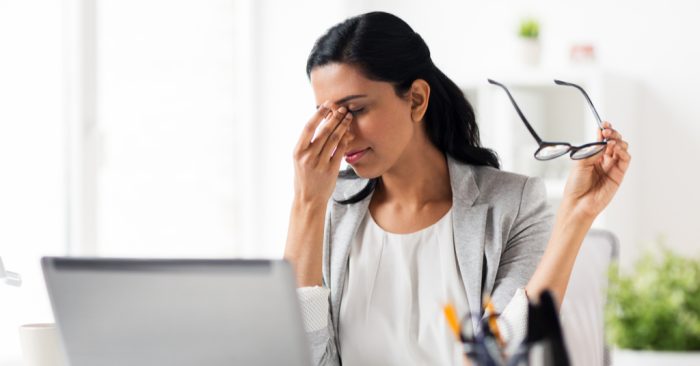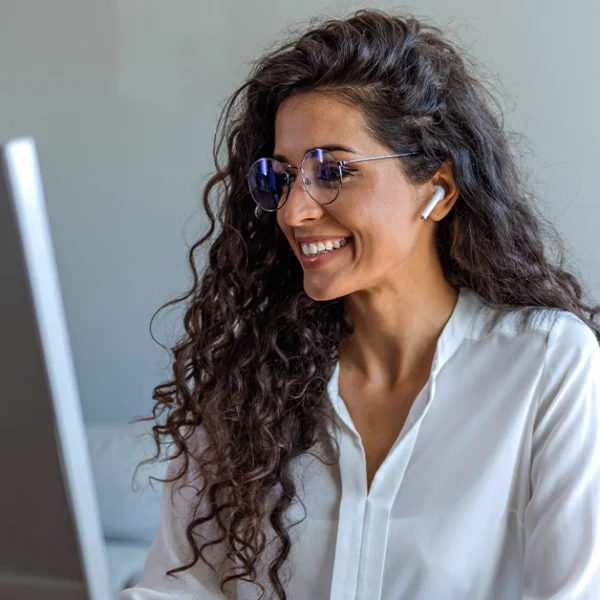The average adult in the United States spends 11 hours and 27 minutes per day interacting with different types of media. More than 80% of Americans indicated that they spend two hours or more per day in front of a screen, whether it be from texting on a smartphone, reading on an e-reader, watching TV, or studying on a computer.
Another study from the Journal of American Medical Association concluded that the percentage of Americans suffering from myopia rose from 25% to 41% since the 1970’s. Experts indicated that the reason for the increase of nearsightedness could be from the proliferation of “near-work” such as studying and texting.
Eye fatigue experienced from spending too much time online is called Computer Vision Syndrome, or Digital Eye Strain. Here is what you should look out for to make sure you can identify whether you have Digital Eye Strain.
Some common symptoms of Digital Eye Strain are:
- Sore, tired, burning or itching eyes
- Watery or dry eyes
- Blurred or double vision
- Headache
- Sore neck, shoulders or back
- Increased sensitivity to light
- Difficulty concentrating
- Feeling unable to keep your eyes open
There are some factors that might make Digital Eye Strain worse, including
- Glare on your screen
- Poor posture
- Setup of your computer workstation
- Circulating air, such as from air conditioning or a nearby fan
While it is virtually impossible to significantly decrease the time spent staring at a screen when studying, these simple tips can help to reduce Digital Eye Strain:
- Use the 20-20-20 rule. For every 20 minutes of computer use, look at least 20 feet away for 20 seconds to give your eyes a break.
- Position reference documents so you do not need to move your head to look from the document to the screen. Documents should be above the keyboard, but below the monitor. A document holder may help since it is placed upright and near the monitor.
- Adjust the placement of your laptop so that the screen is 15 to 20 degrees below eye level (about 4 or 5 inches) as measured from the center of the screen and 20 to 28 inches from the eyes. Make sure that your screen is positioned to avoid glare, and sit with your feet on the floor so your neck is in the proper position.
- Try to blink frequently. Blinking will keep your eyes moist and will reduce your chances of developing dry eyes.
- Get your eyes tested regularly to prevent worsening vision that may go untreated.
You must use electronic devices to study for the CFA Exam, but you can take the proper steps to manage eye strain in the process. Electronic devices are here to stay; we just need to know how to use them wisely to keep our eyes healthy as we continue to use them in our personal and professional lives.





